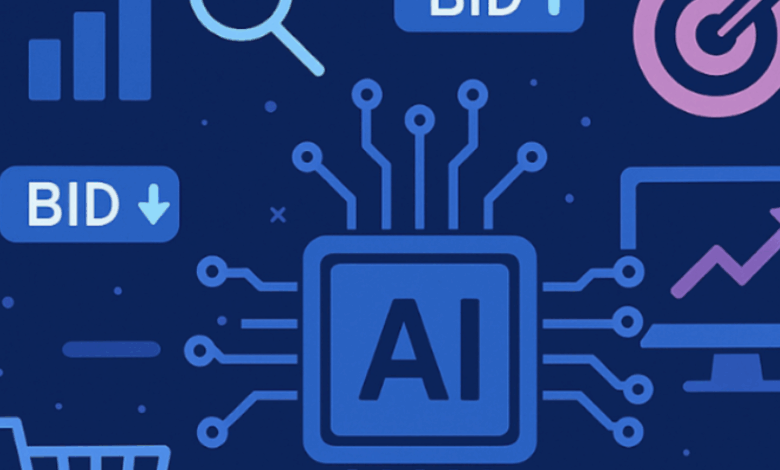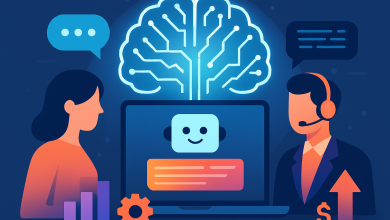
Artificial Intelligence is rapidly transforming digital advertising, streamlining complex and time-consuming tasks for operations teams and media buyers. From data analysis and creative development to identity resolution, AI supports a wide range of advertising functions. Yet, one of its most powerful and often overlooked use cases is bidding optimisation through demand-side platforms (DSPs).
In the early days of programmatic advertising, pre-packaged algorithms delivered KPIs for media buyers across the open web. These off-the-shelf algorithms were leveraged to improve efficiency, but the metrics they focused on, such as click-through rates and impressions, were often just proxies for real business outcomes.
With greater computing power and improved access to data science expertise, advertisers can now ‘build their own algorithm’ (BYOA). This means they can create custom bidding strategies tailored to their goals, without significant technical lift or investment. As this technology becomes more accessible, advertisers have the power to align their media buys with AI-driven insights that reflect their business objectives.
Custom bidding algorithms are rapidly expanding beyond the open web into digital’s fastest-growing environments, including social and Connected TV (CTV), with the potential to drive more effective outcomes across a fragmented landscape.
From manual buys to AI optimisation
When DSPs first arrived in the late 2000s, they offered standard algorithms that gave basic controls to advertisers. While these tools were sufficient for a time, they were non-configurable and attached to simple KPIs. They weren’t built to accommodate advanced metrics tied to brand outcomes like brand lift, attention metrics, or downstream sales.
As campaign data volumes exploded throughout the 2010s, advertisers started asking more challenging questions of their partners, including calls for greater transparency around how their budgets were being spent and how their campaigns were performing. Since then, economic and geopolitical pressures have placed even greater strain on budgets, and now demand measurable business outcomes.
Attention is an emerging metric that exemplifies this shift. As DSPs lack native support for attention data, they require external measurement platforms and, crucially, tools that can operationalise that data into live bidding strategies.
Recognising that these basic tools were not suited to advertisers’ nuanced needs, forward-thinking DSPs began to open up their systems and allow brands to plug in third-party solutions. By the mid-2010s, this included early-stage customisable AI built to ingest, interpret, and act on data.
Today, advanced custom bidding algorithms enable advertisers to manage their media plans effectively, allowing them to make optimisations that reflect their bespoke performance goals and connect omnichannel media investments directly to business outcomes. Critical components of the media plan – including quality metrics informed by attention, viewability, frequency, budget, and brand suitability, which are unavailable through the off-the-shelf algorithms – can be managed at scale. The AI also progressively learns, which maximises effectiveness for advertisers.
Data interoperability
The evolving identity landscape has only added urgency to the shift toward more intelligent, privacy-conscious advertising. Custom bidding helps meet this challenge. Instead of relying on third-party cookies or identifiers, the best solutions use contextual and semantic metadata. Combine that with first-party data and properly consented third-party sources, and advertisers get the accuracy they need without infringing on privacy regulations or platform constraints.
Many of the most valuable digital signals live in siloed systems. Data from customer data management platforms, customer relationship management platforms, and retail databases holds rich information on pricing, inventory, and point-of-sale trends. Custom AI technology can help break down those silos, analyse vast data sets, and transform insights into actionable intelligence, feeding this knowledge directly back into media strategies.
Media connectivity
Custom AI is extending its impact beyond traditional programmatic buying into emerging media channels. In CTV, for instance, bespoke bidding algorithms can use impression-level data, first-party data, and third-party measurement data from providers to dynamically drive brand-specific outcomes.
Meanwhile, social media platforms are also adopting programmatic principles of their own. As they compete with the open internet and other platforms, they are scaling DSP-like bidding and open-programmatic capabilities. This will provide brands with more flexibility and choice when realising their social media strategy across formats, much like on the open web.
AI-driven media effectiveness is transforming digital advertising by significantly improving performance. By dynamically processing signals such as first-party data and offline sales insights, these tools optimise media strategies to ensure ad spend delivers brand-specific outcomes. As these ‘BYOA’ solutions become more accessible across both open web and walled gardens, they will pave the way for brands seeking more meaningful business results.





